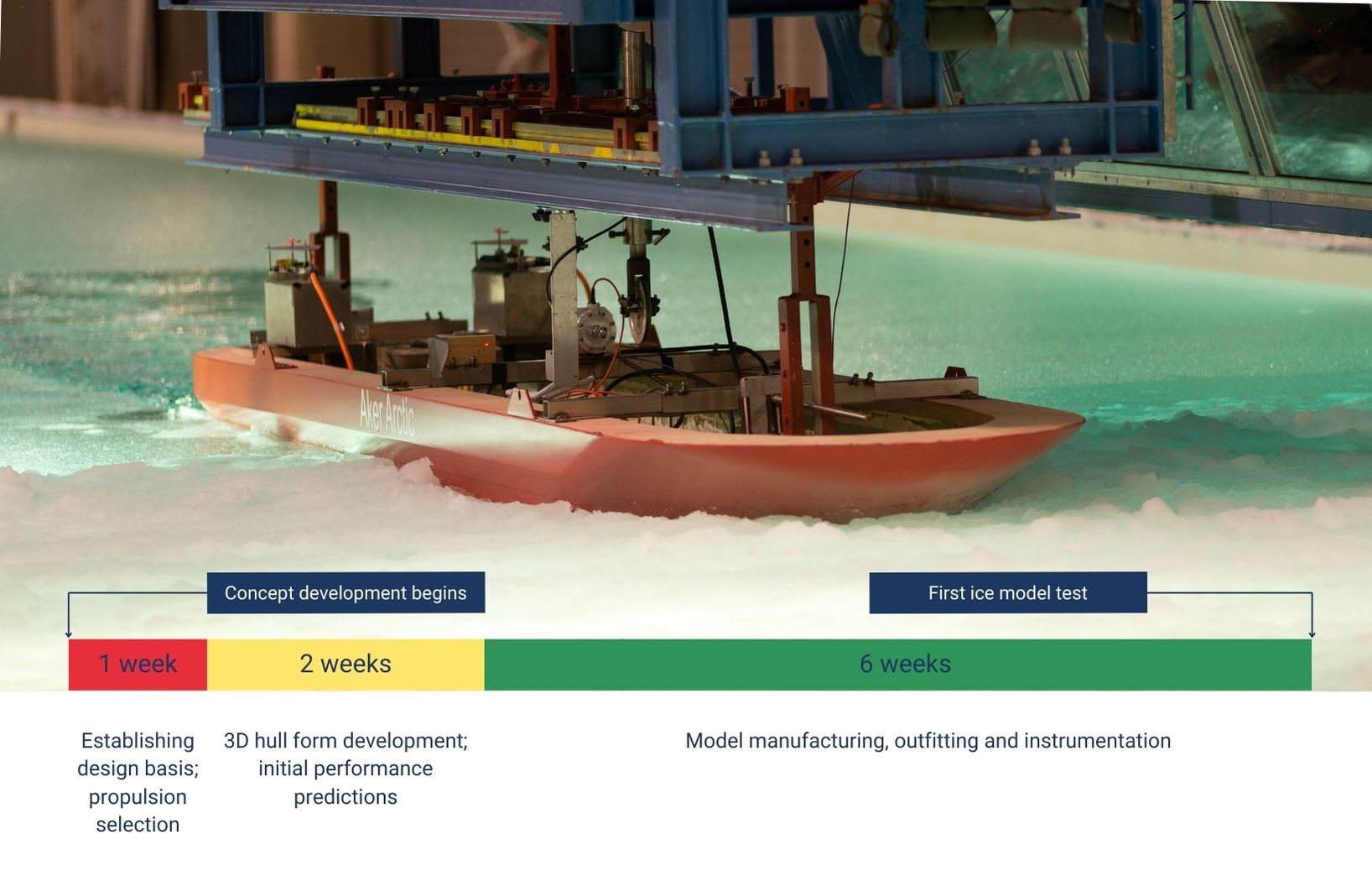An icebreaking hull in a fortnight
A new icebreaker hull form in two weeks and model tests just six weeks after that? Correct – a fast-track design spiral is possible when time is limited.

Every icebreaker is designed individually to fit a certain purpose and operational area.
“Therefore, using an existing design for new tasks is not a recommended option,” says naval architect Tuomas Romu. “Especially, as an experienced designer with hundreds of references, we can develop a tailored hull in a very short time – even within two weeks – if the schedule is tight.”
Steps in the design
Once the design basis – the vessel’s mission and intended area of operation – is known, performance requirements such as icebreaking capability can be established. The following step is to decide the propulsion configuration based on project-specific boundary conditions.
“When you have extensive experience, hull form development is relatively straightforward,” Romu says. “The myth that this phase takes years is simply not true.”
Model tests for verification
After the hull form has been developed in a three-dimensional CAD environment, the initial icebreaking performance predictions are done using Aker Arctic’s proprietary calculation methods, powerful CFD tools, and the design reference database. Then, a physical model can be built and tested in the model basin to verify that, indeed, the design functions in ice as intended and performs in speed trials as expected.
“This proof of concept verifies that critical icebreaking functions and the agreed parameters are fulfilled,” says naval architect Maximilian Vocke.
“In a fast-track scenario, this could be done as early as six weeks after the hull form has been developed, but usually such a tight schedule is not necessary. The model testing can also wait until a later stage in the design, when the concept has been further developed, and also include tests in open water.”
Existing hull forms
Using an existing hull form is seldom advocated for several reasons. Firstly, the hull form is an integral part of the ship and cannot be designed as a separate entity. Secondly, an icebreaker is always designed to specific operational conditions and missions.
“A good example is the Baltic icebreaker concept we have developed recently. Although Finland and Sweden border the same Baltic Sea, the final design for the Swedish icebreaker is different from the reference design because it has been tailored for Swedish needs,” Vocke explains.
Avoiding pitfalls
New regulations, technology and design tools develop at a fast pace. A design which was top-of-the-line a few years ago may not be the most advanced and efficient of its kind today.
“Designing an icebreaker is a complicated process requiring know-how and experience. Small changes in the design can result in big improvements, but this is true also in reverse, and using something you are not familiar with can result in costly rectification,” Romu adds.
“It is particularly important to find the correct balance between icebreaking capability, open water performance, and seakeeping characteristics which are unique for each project.”


Model tests visualise the design
In the 17 years that model testing has been offered at Aker Arctic’s ice laboratory, about 1500 ice sheets have been prepared. Prior to that, countless more model tests were made in the two previous model basins.
“Ice model testing is the only way to examine certain performance-critical phenomena such as the interaction between hull, propulsion and ice. Sometimes the hull form can be tweaked for even better performance based on visual observations,” Romu clarifies.
Comparing alternatives
In addition to performance trials in different ice conditions, operational tests can be used to evaluate how an icebreaker would perform in various tasks such as breaking free a beset vessel or turning while towing a cargo ship. Development of smaller details and design features is also possible.
“For example, we have tested different skeg geometries with model tests and then chosen the best one for the final design after seeing the results,” Vocke says. “When developing the port icebreaker Ob a few years ago, the final position and alignment of the vessel’s four azimuthing propulsion units were determined through iterative ice model tests.”
Cost savings with model tests
When reliable results are available early in a project, cost savings can be substantial in the more detailed design and construction stages. After all, model testing comes at a fraction of a ship’s construction price.
“There are three main benefits of model tests,” Vocke lists. “Firstly, they are used for verification of critical functions and contractual agreements. Secondly, if a customer is considering new operational principles, model tests can confirm that the chosen parameters are correct. Thirdly, if several options are considered, model-scale testing is a cost-efficient way to examine and compare results; for example, different propulsion configurations were tried recently for the Swedish icebreaker.”
Text: Catarina Stewen

